![]()
![]()
![]()
Use LEFT and RIGHT arrow keys to navigate between flashcards;
Use UP and DOWN arrow keys to flip the card;
H to show hint;
A reads text to speech;
14 Cards in this Set
- Front
- Back
|
|
Protozoa, Mycetozoa (Slime molds) and Algae |
|
|
Give feeding strategy and locomotion for Protozoa |
Feeding strategy consists of being heterotrophic, meaning that they cannot digest their own food. And Locomotion can range from Pseudopodia, Cilia and Flagella. |
|
|
What does Pseudopodia mean and what were some of the examples discussed in class? |
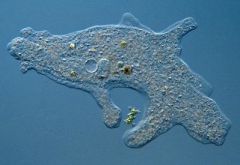
Pseudopodia means "fake foot" which are temporary projections of the eukaryotic cell used to propel the cell around. We looked at Amoebas, Forams and Radiolarians |
|
|
What does Cilia mean and what were some of the examples we looked at in class? |
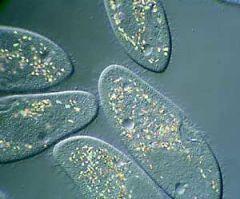
Cilia are little microtubule hair like projections from all around the cell which allow it to move around. Some examples would be Paramecium, Vorticella and Stentor. |
|
|
What does Flagella mean and what are some examples we looked at in class? |
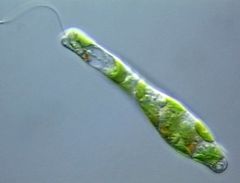
Flagella is a locomotion that is due to a tail extending out from the cell that whips back and forth to propel the cell around. Examples: Giardia, and Euglena. |
|
|
Give feeding strategy for Algae. |
Algae are typically Autotrophic, meaning that they can synthesize their own food. |
|
|
Name the Groups of colored algae we went over |
Chrysophyta, Phaeophyta, Rhodophyta, and Chlorophyta |
|
|
What is Chrysophyta? |
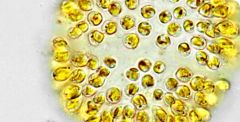
This lineage refers to the gold algae. They are unicellular and a very similar morphologically to brown algae. |
|
|
What is Rhodophyta? |
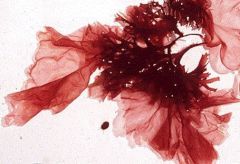
This lineage refers to the red algae. They are mostly multicellular but some can be unicellular. |
|
|
What is Phaeophyta? |
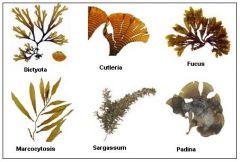
This lineage refers to the brown algae. They are almost entirely marine, have a wide range of color and can range in size. Kelp forests are brown algae. |
|
|
What is Chlorophyta? |
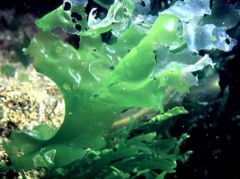
This lineage refers to the green algae. They are primarily found in fresh water environments. They can have very large blooms. Can be single celled, filamentous or multicellular. |
|
|
What are Dinoflagellates? |

Lineage of Algae. Are photosynthetic. Cause harmful red tides. Are bioluminescent. |
|
|
What are diatoms? |
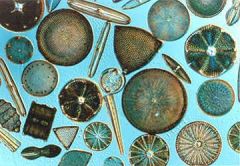
Lineage of Algae with distinct silicon cell walls. Most are unicellular but can be filimentous and colonial. Are among the most common type of phytoplankton. |
|
|
What is the feeding strategy of Mycetozoa or Slime Molds? |

Mycetozoans are heterotrophic meaning they cannot synthesize their own food. |

